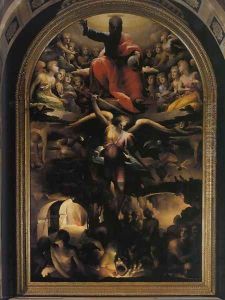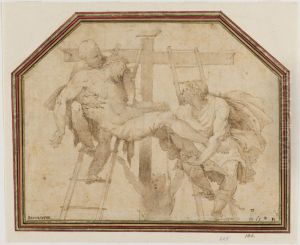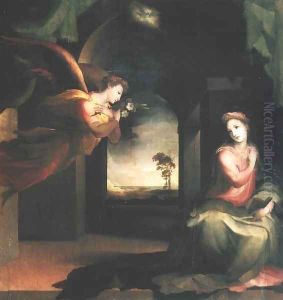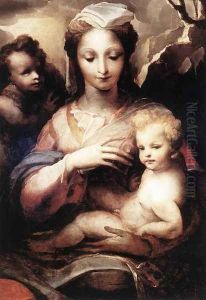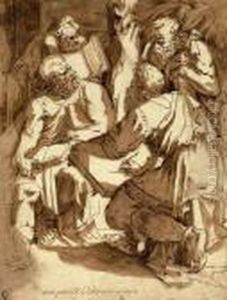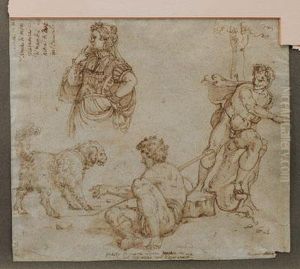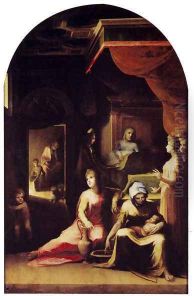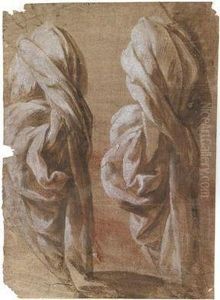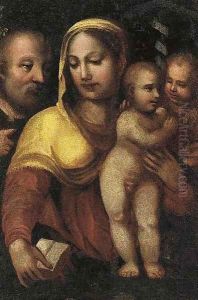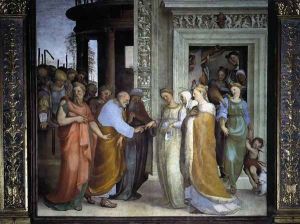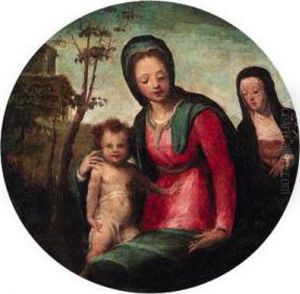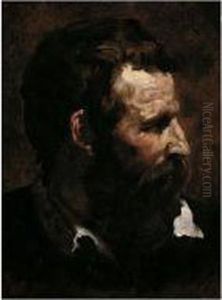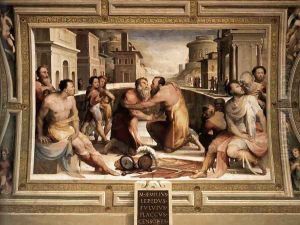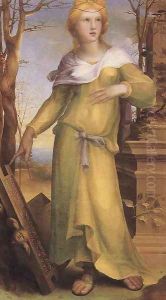Domenico Beccafumi Paintings
Domenico Beccafumi, also known as Domenico di Giacomo di Pace, was an Italian Renaissance painter, sculptor, and architect active primarily in Siena. He was born in Montaperti, near Siena, in 1486. Beccafumi's artistic talents were recognized early on, and he was sent to study under the guidance of local artist Mechero in Siena. Later, he became significantly influenced by the works of the High Renaissance, especially those of Leonardo da Vinci, Michelangelo, and Raphael, which is evident in his use of chiaroscuro and the dynamism found in his figures.
Beccafumi's work is characterized by its unique blend of Sienese painting traditions with the innovations of the High Renaissance. His style is noted for its ethereal and often dreamlike qualities, with a delicate use of color and light. He was also known for his experimentation with different media, including a type of fresco using oil-based paints, which gave his works a luminous quality.
Among his most famous works are the frescoes in the Palazzo Pubblico in Siena, where he depicted scenes from ancient history and the Old Testament. His altarpieces and panel paintings are also highly regarded, displaying his mastery over composition and his ability to imbue his religious subjects with a sense of emotional depth and realism.
In addition to painting, Beccafumi was skilled in sculpture and architectural design, providing designs for the pavement of the Siena Cathedral, which included intricate marble mosaics. His work on the cathedral floor is considered one of the finest examples of Italian marble mosaic work.
Beccafumi's innovative techniques and his contributions to the Sienese school of painting had a lasting impact on the art of his region. He died in Siena in 1551, leaving behind a legacy as one of the last great masters of the Italian Renaissance in Siena. His works continue to be studied and admired for their creativity and technical prowess, and they remain an integral part of the history of Italian art.










